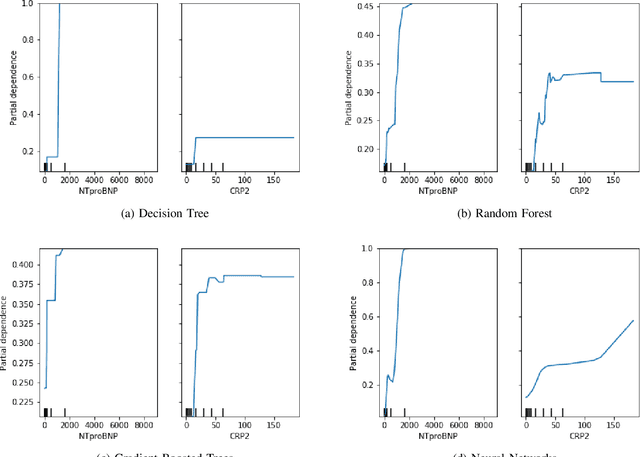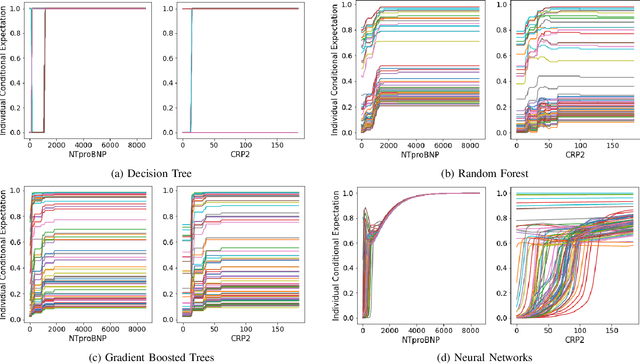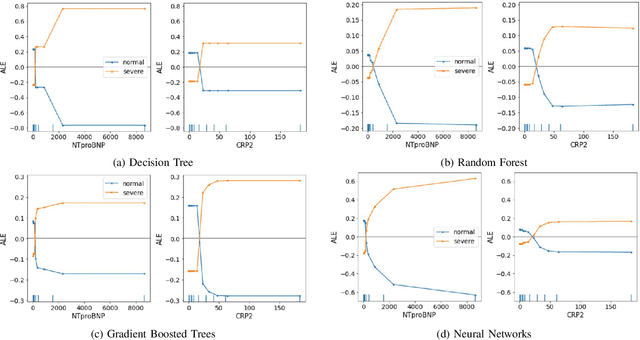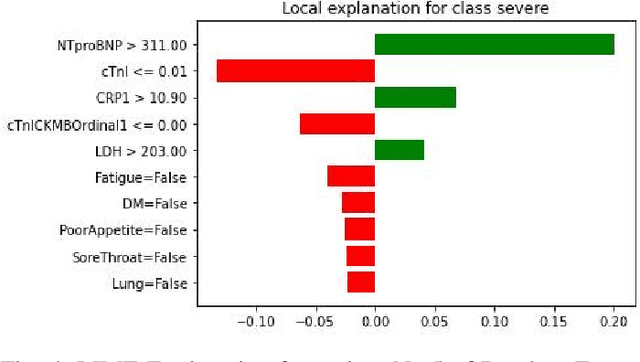Interpretable Machine Learning for COVID-19: An Empirical Study on Severity Prediction Task
Paper and Code
Oct 17, 2020



Black-box nature hinders the deployment of many high-accuracy models in medical diagnosis. It is risky to put one's life in the hands of models that medical researchers do not trust. However, to understand the mechanism of a new virus, such as COVID-19, machine learning models may catch important symptoms that medical practitioners do not notice due to the surge of infected patients during a pandemic. In this work, the interpretation of machine learning models reveals that a high C-reactive protein (CRP) corresponds to severe infection, and severe patients usually go through a cardiac injury, which is consistent with well-established medical knowledge. Additionally, through the interpretation of machine learning models, we find phlegm and diarrhea are two important symptoms, without which indicate a high risk of turning severe. These two symptoms are not recognized at the early stage of the outbreak, whereas our findings are corroborated by later autopsies of COVID-19 patients. We find patients with a high N-terminal pro B-type natriuretic peptide (NTproBNP) have a significantly increased risk of death which does not receive much attention initially but proves true by the following-up study. Thus, we suggest interpreting machine learning models can offer help to diagnosis at the early stage of an outbreak.
 Add to Chrome
Add to Chrome Add to Firefox
Add to Firefox Add to Edge
Add to Edge